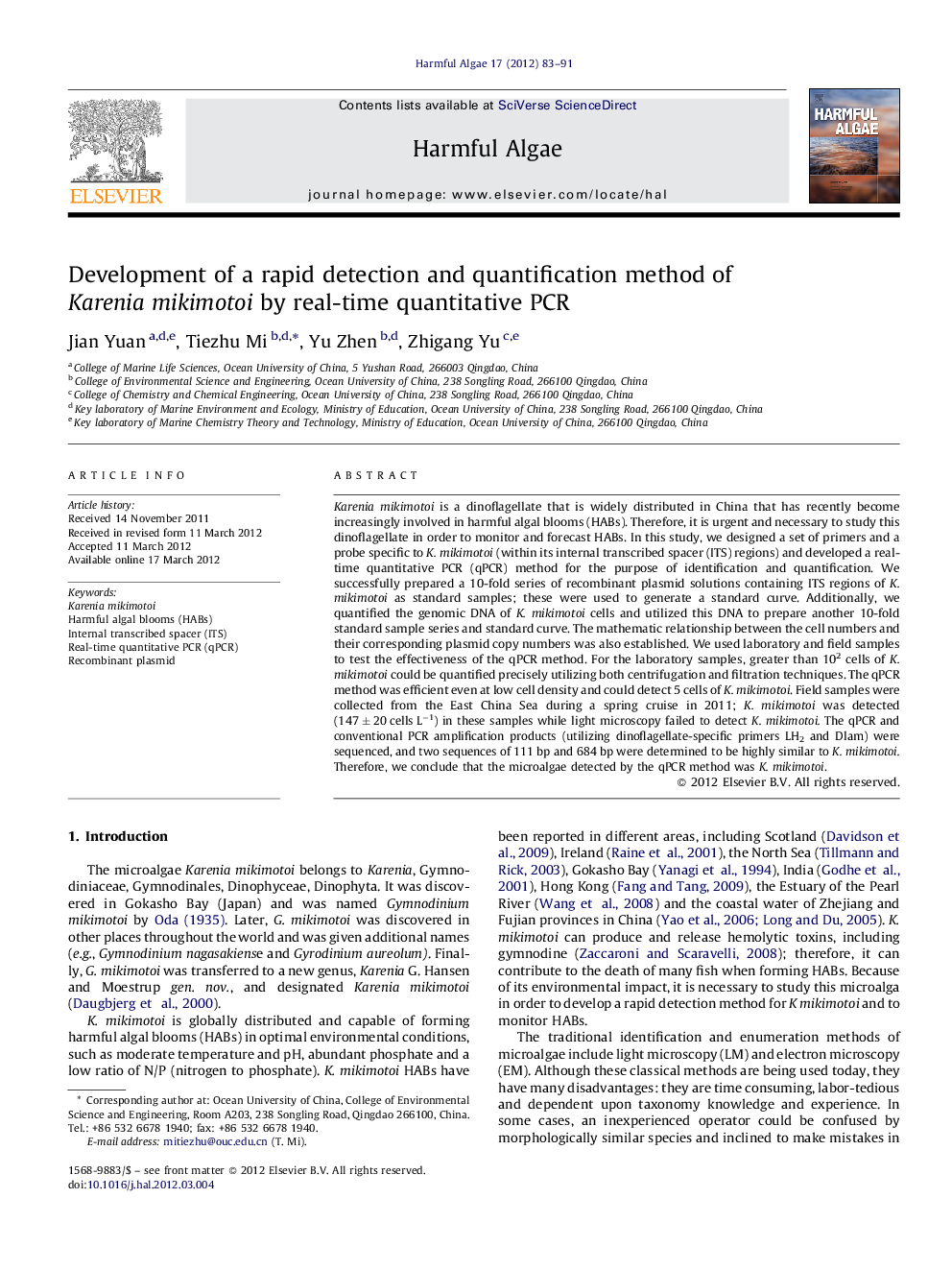| Article ID | Journal | Published Year | Pages | File Type |
|---|---|---|---|---|
| 4545553 | Harmful Algae | 2012 | 9 Pages |
Karenia mikimotoi is a dinoflagellate that is widely distributed in China that has recently become increasingly involved in harmful algal blooms (HABs). Therefore, it is urgent and necessary to study this dinoflagellate in order to monitor and forecast HABs. In this study, we designed a set of primers and a probe specific to K. mikimotoi (within its internal transcribed spacer (ITS) regions) and developed a real-time quantitative PCR (qPCR) method for the purpose of identification and quantification. We successfully prepared a 10-fold series of recombinant plasmid solutions containing ITS regions of K. mikimotoi as standard samples; these were used to generate a standard curve. Additionally, we quantified the genomic DNA of K. mikimotoi cells and utilized this DNA to prepare another 10-fold standard sample series and standard curve. The mathematic relationship between the cell numbers and their corresponding plasmid copy numbers was also established. We used laboratory and field samples to test the effectiveness of the qPCR method. For the laboratory samples, greater than 102 cells of K. mikimotoi could be quantified precisely utilizing both centrifugation and filtration techniques. The qPCR method was efficient even at low cell density and could detect 5 cells of K. mikimotoi. Field samples were collected from the East China Sea during a spring cruise in 2011; K. mikimotoi was detected (147 ± 20 cells L−1) in these samples while light microscopy failed to detect K. mikimotoi. The qPCR and conventional PCR amplification products (utilizing dinoflagellate-specific primers LH2 and Dlam) were sequenced, and two sequences of 111 bp and 684 bp were determined to be highly similar to K. mikimotoi. Therefore, we conclude that the microalgae detected by the qPCR method was K. mikimotoi.
► A novel Taqman qPCR method was developed to detect K. mikimotoi with high specificity, sensitivity and accuracy. ► The standard samples were prepared of recombinant plasmids. ► K. mikimotoi of low density was detected by our method in field samples, while by comparison none was detected by light microscopy.
